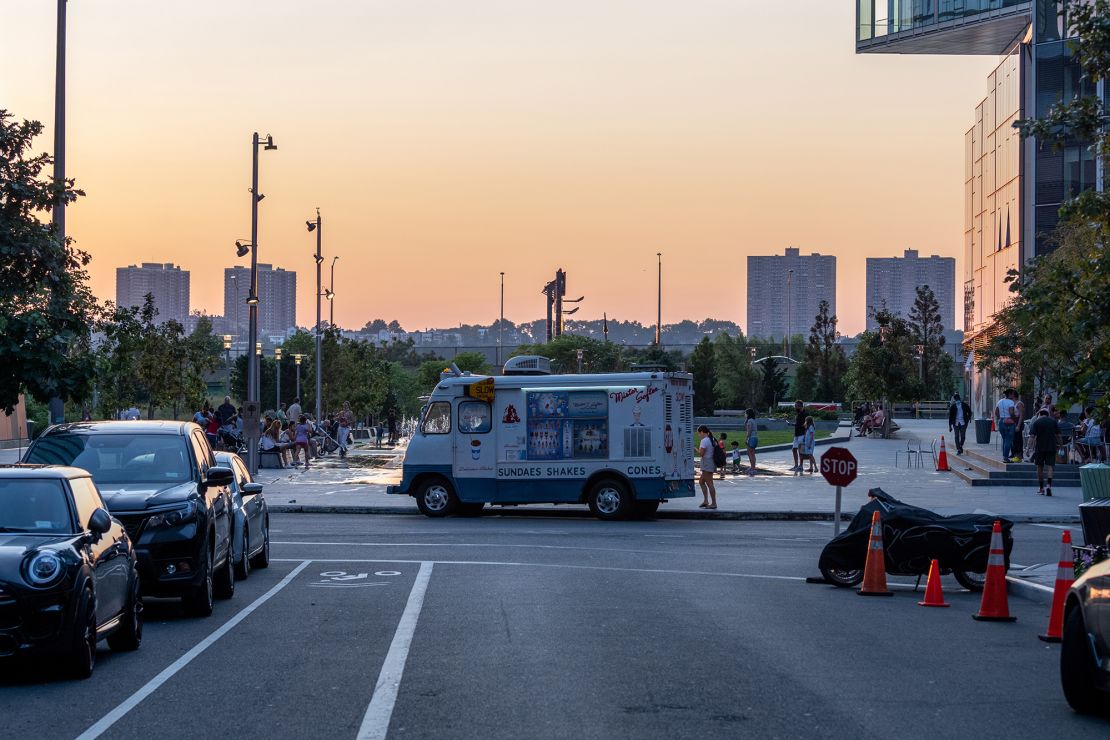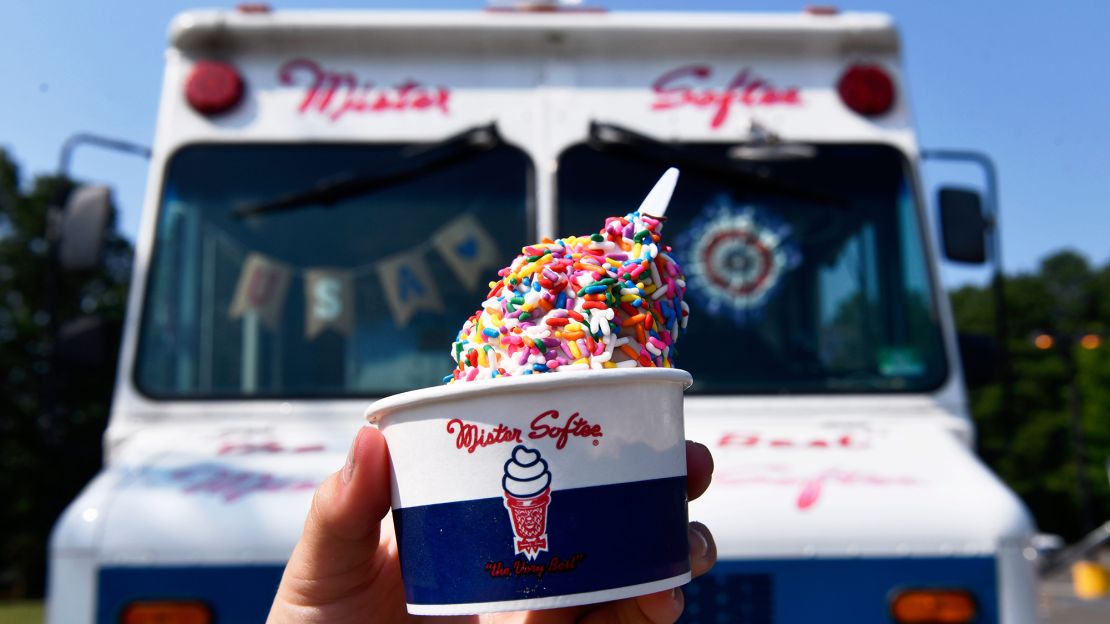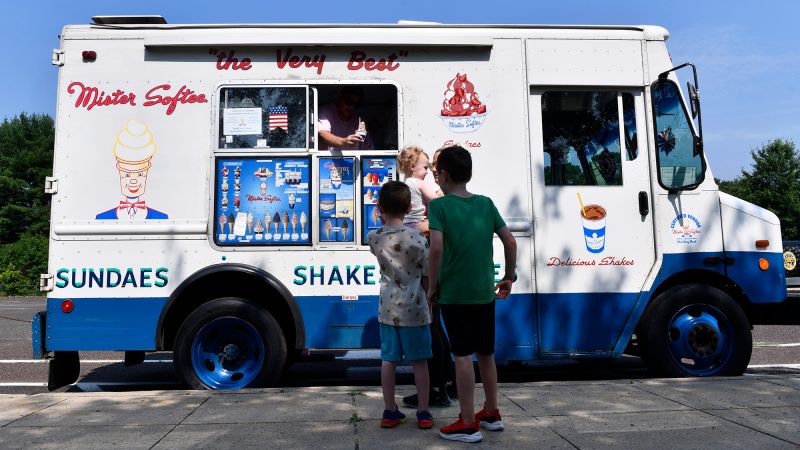New York
CNN
–
It’s never been harder to be Mister Softee.
At one time, there were more than 2,000 Mister Softee trucks in 38 states during the company’s heyday in the 1960s. Now, there are only about 630 Mister Softee trucks roaming neighborhoods and parks in 21 states.
Competition and rising costs are hurting sales. Counter-intuitive factors like increasingly hot weather are hurting business. And broader social trends — like shrinking American family sizes and even the advancement of technology — also play a role.
“There’s a lot more competition, especially in New York, than there was in the 1980s and 1990s,” Mike Conway, Mr. Softee’s vice chairman and grandson of the company’s co-founder, told CNN in a telephone interview from the company’s office. in Runnemede, New Jersey. “Ice cream has become more popular – more shops are doing it. Everyone is getting into the business little by little.”
Mister Softee trucks have been around since 1954, when two brothers, James and William Conway, started the business in Philadelphia. An advertising agency created the iconic sound a few years later for radio commercials, and it helped propel the company into the largest ice cream truck franchise in the United States.
But the real key wasn’t the noise. It was the soft serve ice cream. Not because customers wanted it – although they did – but because it made better business sense.

“We found there was a demand for soft ice cream,” William Conway said in a 1991 interview. They sold soft ice cream because it was easier to serve and they needed volume to make the business sustainable. “A local dairy developed the recipe, a friend designed our conehead brand and I came up with the name, six letters in each word.”
But some Mister Softee franchise owners are wondering how much longer they can stay in business.
Most Mister Softee trucks are owned and operated by independent franchise dealers, many of them first-generation immigrants and small business owners. Franchisees are given a specific neighborhood or area where they can sell. Within the assigned territory, the franchise owners set the prices of the ice cream and set the main selling points.
Carlos Vazquez has owned the Mister Softee franchise for over a decade in downtown New York City. He saw entering the industry as a way to achieve the American dream of saving money and buying a home.
But field assignments don’t take into account external competition, of course. Boutique ice cream, ice cream and cake shops like Van Leeuwen and Oddfellows have popped up in neighborhoods and malls across the country. And it’s not just ice cream shops and trucks—Shake Shack and other chains are selling more milkshakes, too.

Vazquez has seen every part of the business become more expensive since the pandemic, including the licensing fees he pays the company, ice cream supplies, gas and truck wear.
Then there are the wars raging on the ground with independent trucks for the coveted street corners. Mr. Softee has successfully sued new competitors for allegedly infringing his design and noise.
“We have to pay more money for insurance. Half a million dollars. Politics grows”, he said. “Maintenance, if something breaks in the truck. It’s a lot of work to maintain the truck.”
Supplies of milk and ice cream have also become more expensive. Wholesale ice cream inflation has risen 21% since 2020, and wholesale ice cream cone inflation has risen 25% over the period.
This has forced him to raise prices. A vanilla or chocolate ice cream cone now costs $5, up from $1 when it first started. It sells half as much ice cream on most days as it used to.
“We cannot control [inflation]”, he said. “It’s part of the world.”
Perhaps surprisingly, the extreme heat is also hurting Mr. Softee’s business. The equipment in the truck breaks down more easily when it is very hot and customers stay at home.
“If the weather is really hot, it’s not really good for business. It’s strange,” said Vazquez. “People don’t want to walk a lot. It’s creamy and it melts and you get dirty and ask for extra wipes.”
2024 was the hottest summer on record for about 100 US cities from Maine to California.

If you take the nation’s 50 largest cities and add up the number of days above 95 degrees, there have been at least 1,071 this summer — 161 more than the average over the past decade for the same period.
The extreme heat is hurting even the big ice cream brands.
Unilever, the maker of ice cream brands such as Magnum, said last year that sales had fallen because of a heat wave that swept through Europe.
When it comes to weather, “there’s a sweet spot for temperature,” Unilever chief financial officer Graeme Pitkethly said at the time. “When it gets too hot, people turn away from ice cream and buy a cold drink instead,” he said.
The Mister Softee business is a window to changes in the neighborhood, family size and children’s habits. All this affects trucks.
Families are smaller than they used to be, and more families have both parents working, so kids aren’t running around the streets as much in the summer, Conway said. The average family size has fallen from 3.5 people to 2.5 people since 1940, according to the US Census Bureau.
“Kids don’t play outside as much as they used to,” he said.
Mister Softee franchisees are adapting by extending the ice cream season: starting earlier in the spring and ending in November. They are also catering to more private events like birthday parties and 4th of July gatherings. And Mister Softee now has its own mobile app so people can find the nearest truck.
“Softee is an icon,” said Carlos Vazquez. “We have to stay in the industry.”
